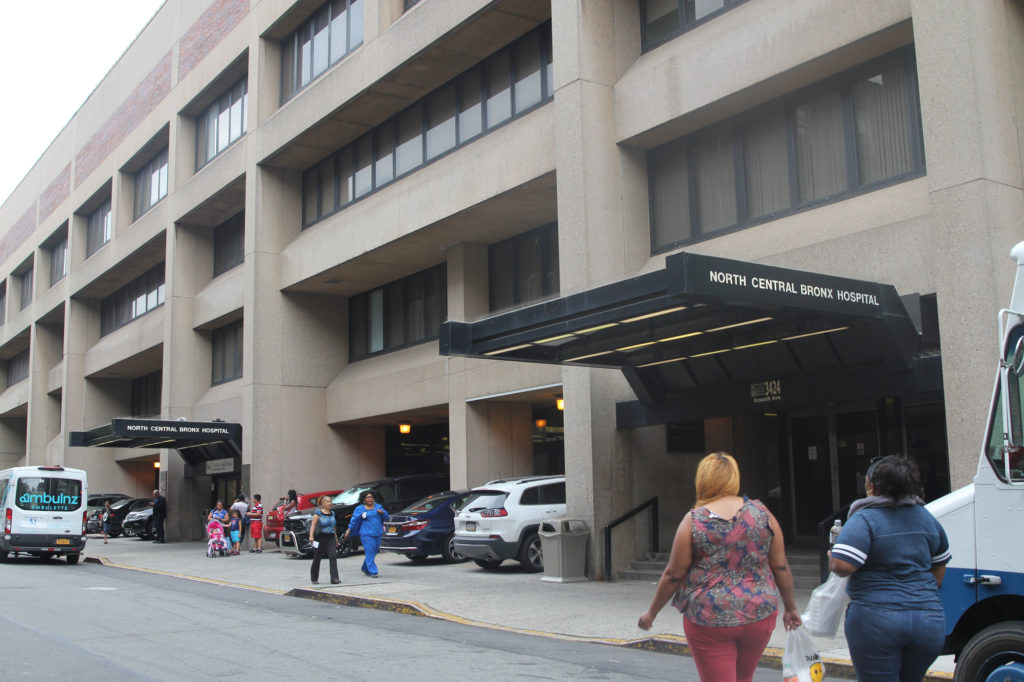
Photo by Síle Moloney
New York Gov. Kathy Hochul and the legislature took significant steps in the 2024-25 budget to end medical debt and enable more patients living in New York to secure the healthcare they need, without fear of facing financial ruin.
All New York hospitals are nonprofit charities under state law and receive $1 billion plus in Indigent Care Pool (ICP) funds to cover their uncompensated care costs. In exchange for ICP funding, the Hospital Finance Assistance Law (HFAL) requires hospitals to offer discounted care to underinsured low-income and moderate-income patients. The ICP funding is basically allocated on formulas that start with the amount hospitals report as free care — patients without insurance or underinsured.
Over 80,000 New Yorkers have been sued for medical debt since 2015 (source: Community Service Society of New York) and 740,000 are burdened by medical debt (source: Crains New York Business). These New Yorkers suffer the serious consequences of a bad credit score because of medical debt; difficulties securing a job, renting an apartment, buying a car, and securing a loan or a mortgage.
The federal Consumer Financial Protection Bureau has found that credit reporting of medical debt is rife with errors and not predictive of a consumer’s ability to pay future bills. This also is a racial justice issue: medical debt is not an equal opportunity problem with 28% of Black and 22% of Latinx people carrying medical debt, versus 17% of White people.
Medical providers and their collection entities often send unpaid accounts to third-party credit reporting agencies who harass patients. The ICP is not reaching intended recipients: low-income and working-class people who should receive discounted care. Administration of the HFAL across hospitals has been inconsistent with regard to eligibility and discount rates. Now, HFAL provides more generous discounts and closely aligns with the Affordable Care Act.
So far, the 2023-2024 NYS legislation covers several significant reforms to the medical debt problems that the #EndMedicalDebt campaign, a statewide coalition led by Community Services Society of New York, fought hard for, including:
- The Fair Medical Debt Reporting Act – Hospitals cannot report medical debt to credit bureaus. In December 2023, the governor signed the Fair Medical Debt Reporting Act (S.4907a/A.6275a) which protects New Yorkers from having their credit ruined due to the reporting of medical debt to credit bureaus.
- The Reformed Hospital Finance Assistance Law (HFAL) (S.1366A/A.6027) has been modernized and expanded to cover individuals with incomes 400% below the Federal Poverty Level (FPL) i.e. 54% of New Yorkers.1 The law goes into effect October 2024 and includes many wins.
- All hospitals must conform to HFAL.
- Hospitals are required to provide written notification of hospital financial assistance during intake, registration, and discharge.
- There is no time limit on when a patient can apply for assistance.
- Asset test and immigration status will not be used to determine any patient’s eligibility.
- Hospitals cannot sell debt to a third party. This benefits all patients.
- Hospitals cannot deny patients care because they have a hospital bill.
- Payments are capped along with the interest rate to 5%, and an interest rate can be no higher than 2%. The prior law had 10% and the 90-day treasury rate.
- Hospitals cannot sue patients with income below 400% of the FPL. The prior law had NO restrictions on hospital medical debt lawsuits.
- Discount schedules are offered based on the FPL. There will be no charge for those with incomes under 200% of the FPL (close to 29% of New Yorkers1), a charge of 10% of the Medicaid rate will apply for those with income between 201% and 300% below the FPL, and a charge of 20% of the Medicaid rate for those with income between 301% and 400% below the FPL. The prior law discounts were not as generous, and hospitals had greater discretion on discount rates.
- Underinsured patients with incomes 400% below the FPL or more, defined as individuals with medical costs exceeding 10% of their gross annual income, are eligible for defined discounts. The prior law did not recognize underinsured patients.
- Hospitals are required to report the race, ethnicity, gender, age, and insurance status of those who apply for, receive, and are denied financial assistance.
The new HFAL bill provides the majority of New Yorkers with a more equitable way to pay hospital medical fees, addressing previous injustices around medical debt. Ultimately, readers, if we had passed the New York Health Act (S7590/A07897), medical debt would no longer be a problem in New York State. All residents and people employed in New York State would be guaranteed comprehensive healthcare.
We applaud those of you who have signed petitions, called, or spoken to elected officials, and done all you can to pass legislation that is bringing New York State closer to health justice. Also, great thanks to our New York State Health Committee chairs, State Sen. Gustavo Rivera (S.D. 33) and Assemblywoman Amy Paulin (A.D. 88) for the progress made in the ‘23/’24 session. We ask those who have not yet engaged in ensuring health justice for New Yorkers to join the overwhelming majority of New Yorkers who consider health costs a major issue and become active participants in healthcare campaigns.
Helen Krim leads the health justice steering committee of Northwest Bronx Indivisible and Roberta Todd is a health justice leader and vice president of Northwest Bronx Community & Clergy Coalition Board.
1- Distribution of Total Population by Federal Poverty Level 2022
https://www.kff.org/other/state-indicator/distribution-by-fpl/?currentTimeframe=0&sortModel=%7B%22colId%22:%22Location%22,%22sort%22:%22asc%22%7D




